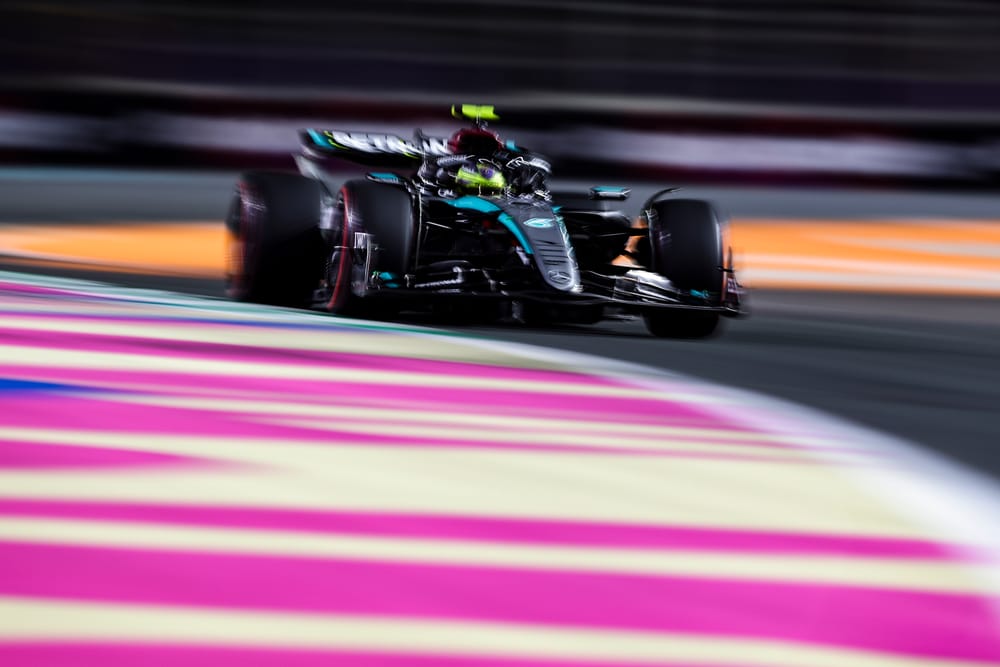Up Next

Red Bull is once again dominating Formula 1 in 2024, while Mercedes continues to struggle with the demands of these ground effect regulations.
For Mercedes, it seems to be a continuation of the same old story from the past two years as Jeddah, with its fast corners, demonstrated.
Lewis Hamilton’s complaints mainly centred on a lack of confidence in the rear end, an all-too-familiar complaint. This is despite the confidence that the team expressed when it released the Mercedes W15 that it had fixed the fundamental problems from the previous seasons. It now appears that it is more of a continuation of 2022 and 2023.
Mercedes has improved the car this year, but it’s still having trouble understanding the big challenge of these ground effect regulations. As I’ve been saying for the past two years, everyone there needs to take a long, hard look at themselves and not only accept that the car still has problems, but also that there’s not enough understanding of the problems to actually go off and address them.
The car is not bad in the low-speed corners, but is nervous at the rear in the high speed corners and gives the drivers no confidence.
And Jeddah was a particularly challenging circuit for this because it’s a high-speed track, which pushes the floor even close to the ground.
The downforce produced increases with the square of the speed. This means the aerodynamic load is enormous the faster you go. This table shows the brute force increase in load from 100km/h to 340km/h at a circuit like Jeddah.
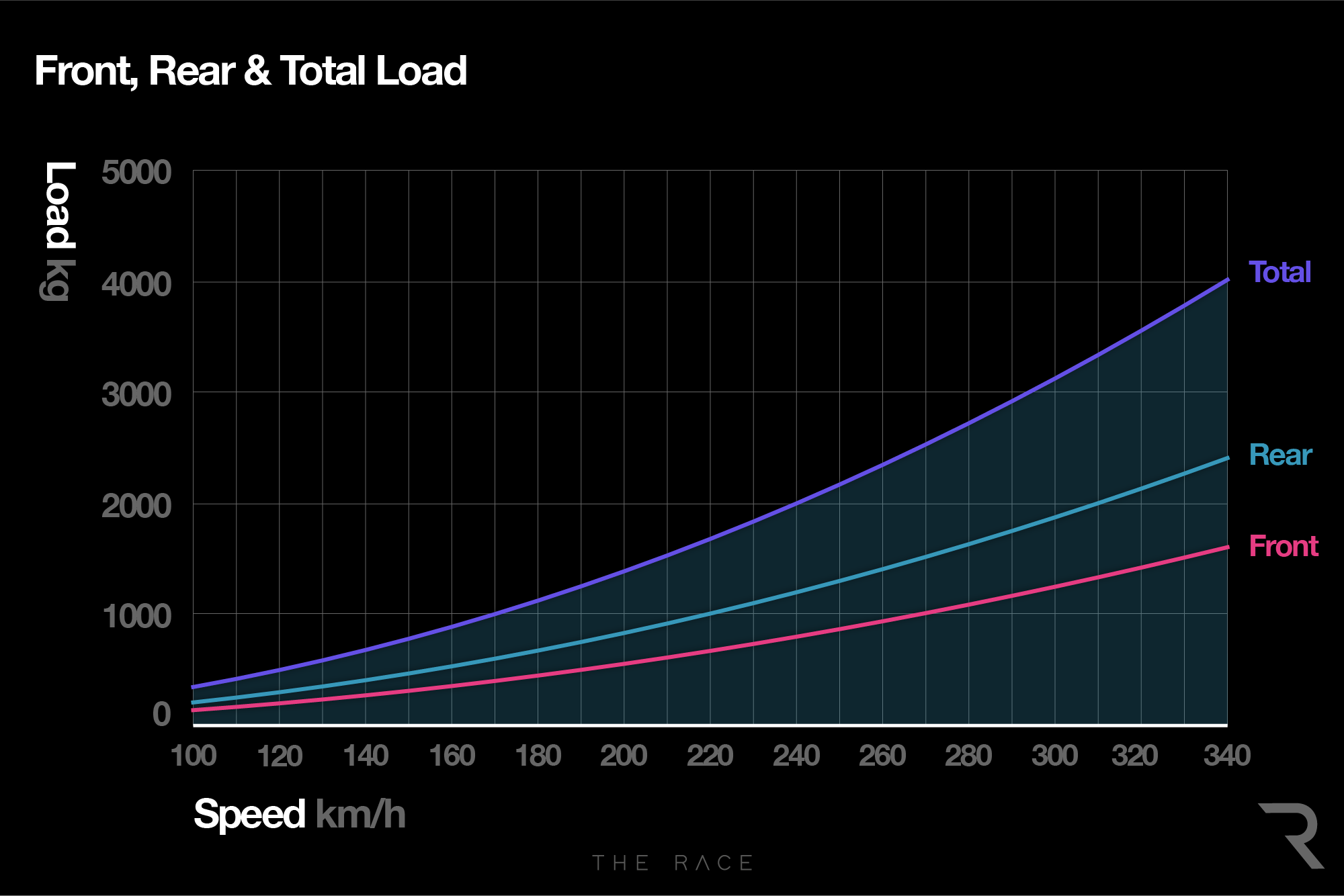
The car's ride height at 100km/h is 25mm front and 70mm rear, which together with the vertical stiffness I have used is a practical set-up. This increasing load pushes the car closer to the track and you have to rely on the vertical stiffness to support that. In the graph below, I have used a simple 40% front/60% rear centre of pressure aerodynamic split.
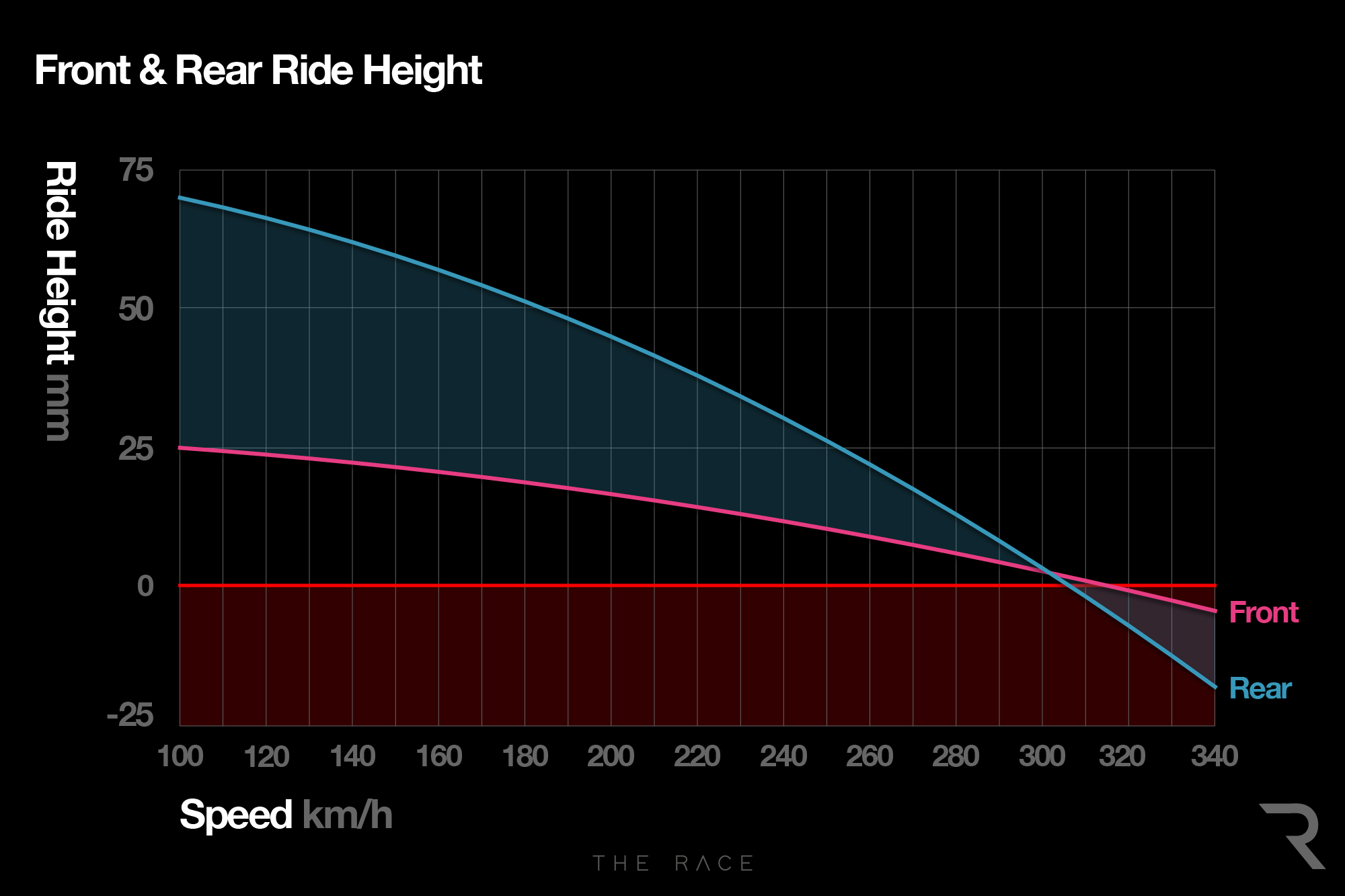
As the graph shows you can’t just support this enormous load with the normal vertical springs, as this would simply make the car mechanically too stiff in slow- and medium-speed corners. The car actually goes below the ground (hence negative ride height) or at least crashes into it at about 300km/h - something obviously no F1 driver wants.
To support the car at high speed you then add in what is called a front and rear central third support spring. The suspension can move initially on the side springs but then the central spring would come into play. In reality, it only supports the load in a straight line, as when the car rolls this central spring just moves laterally and doesn’t compress with that roll, so basically it only supports the load on the straights.
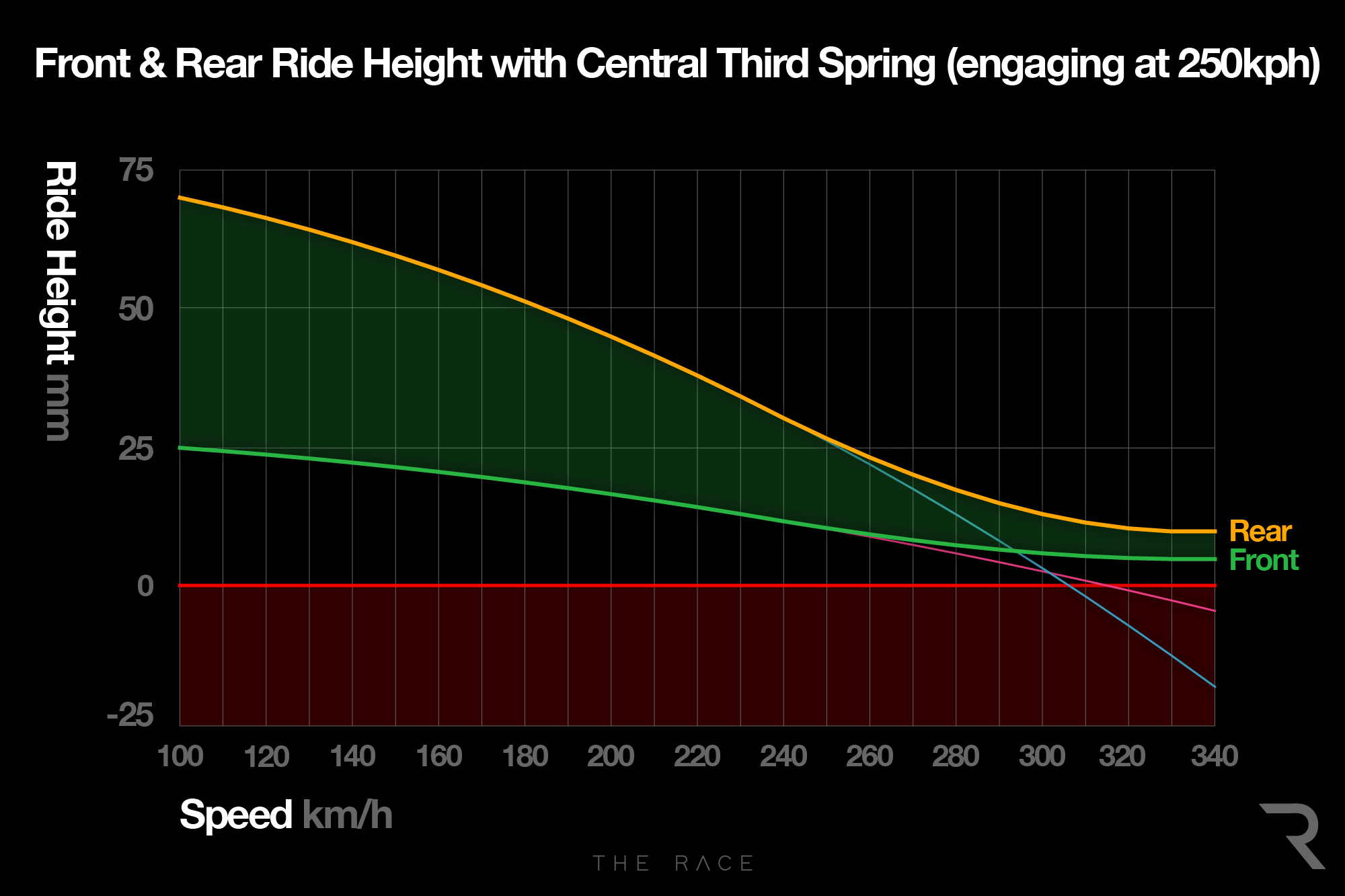
At low speed, you want a balance that gives more front end grip to get the car to react to the steering input especially on turn-in, but at high speed, you want the balance more rearward to give the car rear end stability. This is something that Hamilton has been crying out for for over two years.
The only way you do that is to generate an aerodynamic centre of pressure transient change as the ride height reduces with the extra load from the increased speed.
The front will be roughly twice the vertical stiffness of the rear of the car to deal with the forward weight transfer under braking.
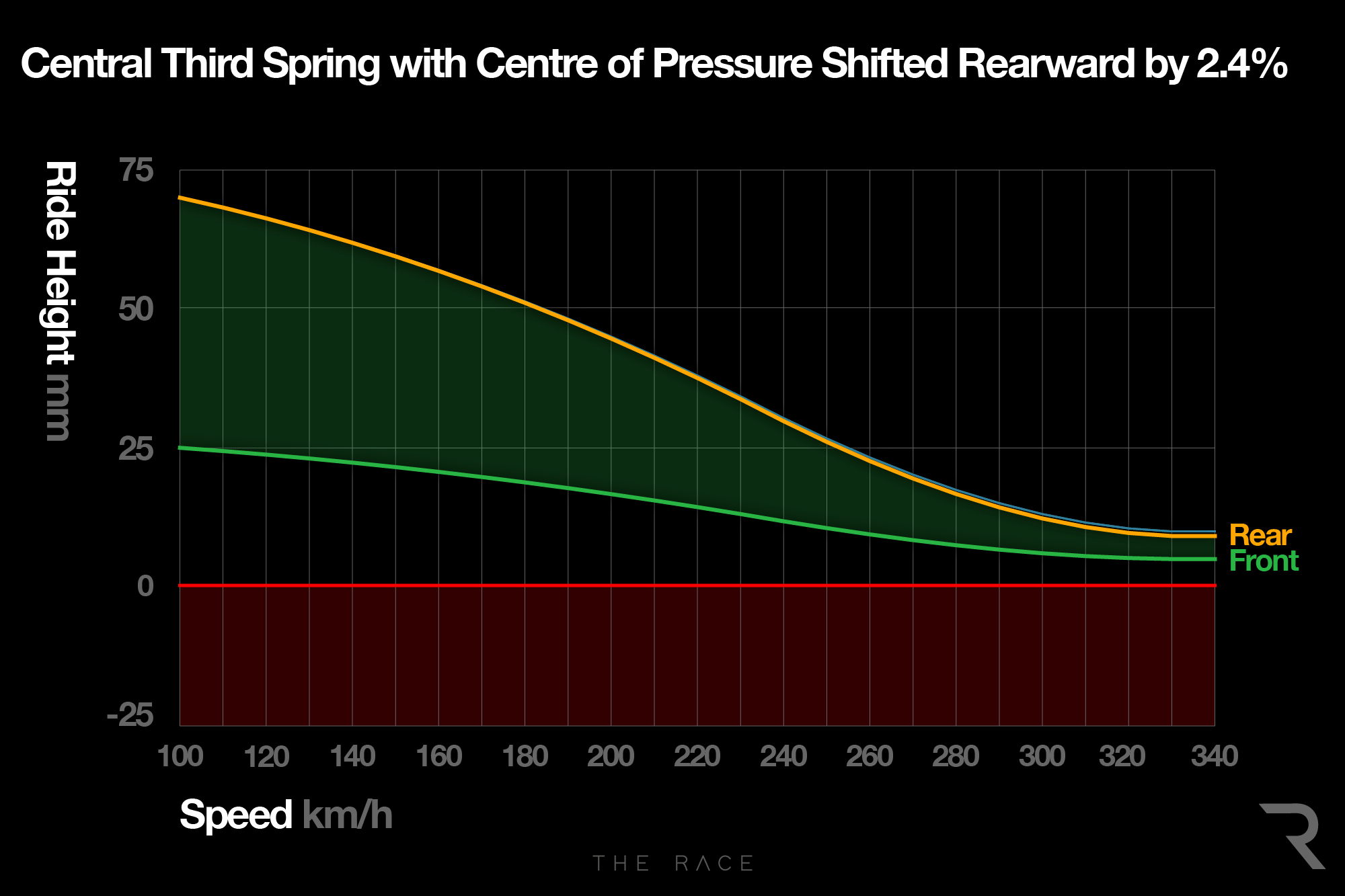
If you can move the aerodynamic centre of pressure rewards during this ride height change, it will give you that increased high speed rear end stability the driver needs.
Because of the stiffness of the central third spring, it will actually compress the rear just that little bit more - the front will actually end up slightly higher. Both ride height changes will be minuscule as in reality it is only a 2.4% shift rearward between 100km/h and 340 km/h.
However, the rear end aerodynamic stability that this 2.4% shift will give the driver will be confidence-building.
As the speed builds, the car is pushed down more at the rear, but because the downforce grows rapidly you run the risk of the car hitting the ground.
That’s where the subtlety of the underfloor details comes into play. As the car gets closer to the ground, you want to try and change that equation so the downforce doesn’t increase at the square of the speed.
To achieve that, you need a floor that has some dedicated airflow separation areas to act like a ‘dimmer switch’.
You don’t want to completely lose the downforce increase, but just enough of a reduction to stop the car from hitting the ground. Doing that while keeping the aero centre of pressure where you want is not easy but it is achievable.
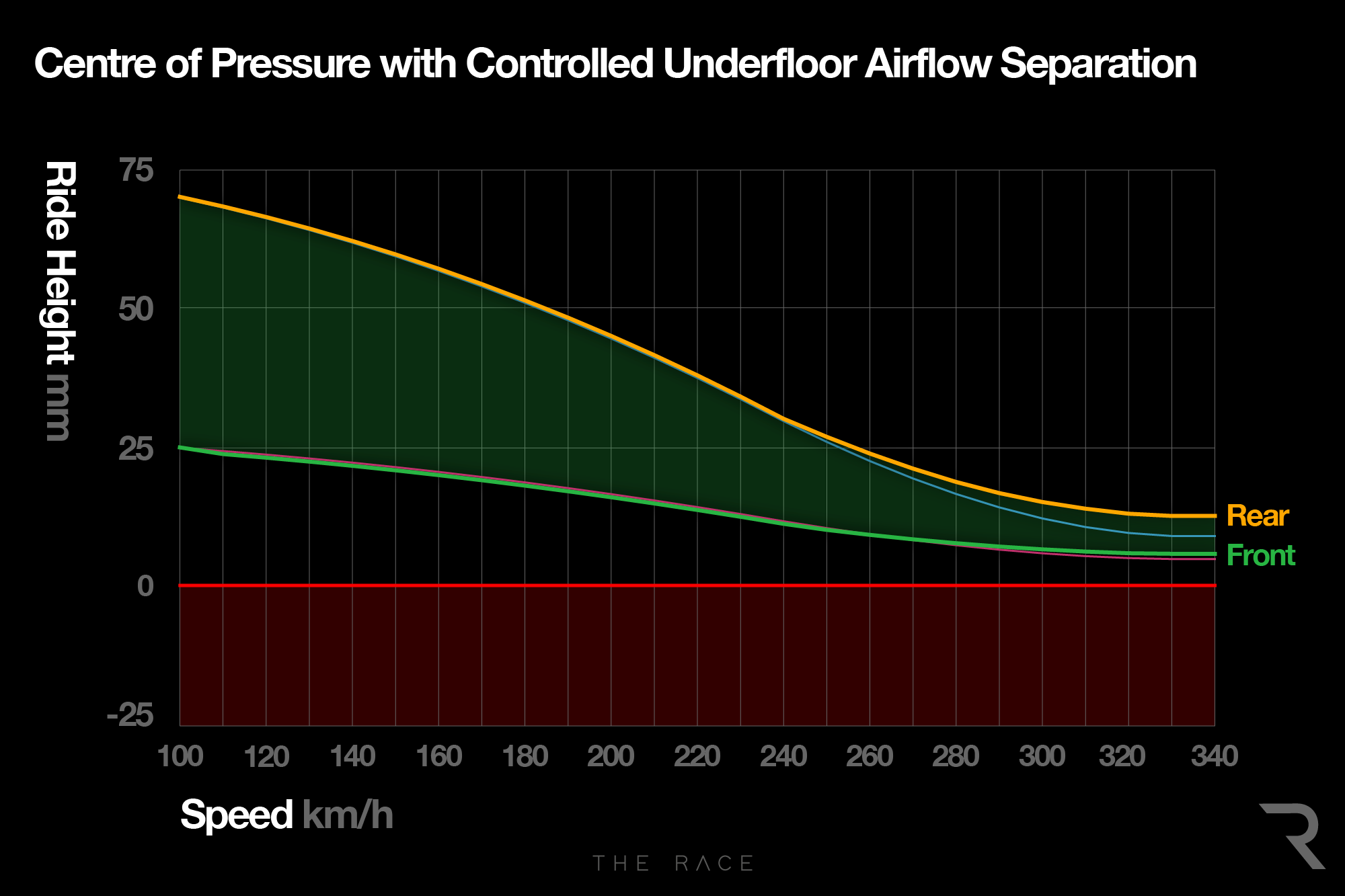
As this final table shows you below, you can play many different tunes with what happens when the car gets close to the ground. The big decision is what tune do you want to play.
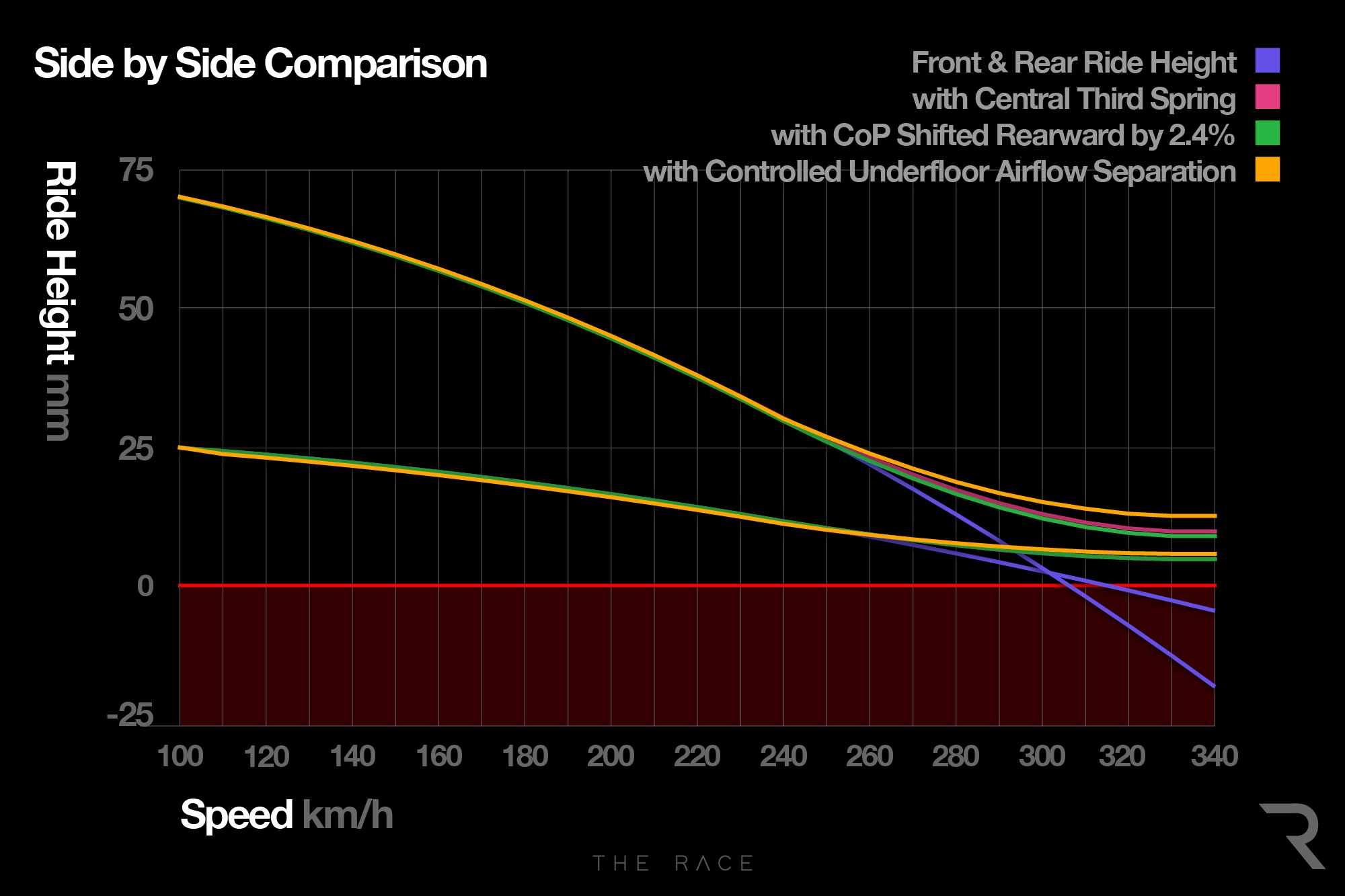
If you have too large an airflow separation area and the load doesn’t increase but goes negative, that’s when you risk inducing porpoising. When the floor gets, say, 10mm from the ground, you more or less want it to stay there otherwise you can hit trouble from porpoising as the car starts to move up and down, losing and gaining aerodynamic load.
The bouncing can come from the porpoising but will also be exaggerated by trying to run the car too low to the ground and, to achieve that, running the car too stiff vertically.
This will mean that all the track inputs are going into the tyre, which has relatively no damping characteristics to control this movement. So it basically just bounces along like one of those exercise balls. There's too much movement and the car just crashes against the track surface.
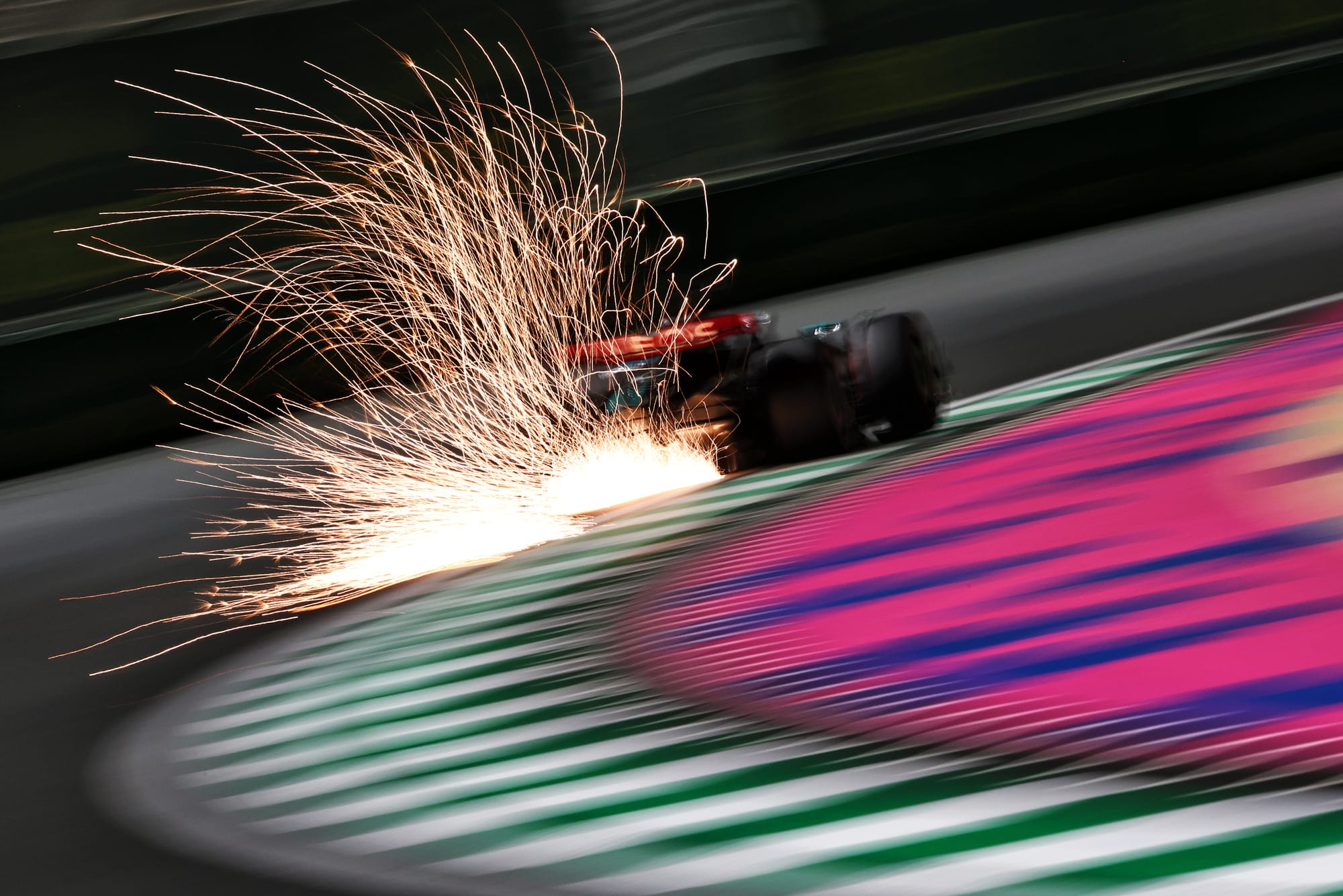
Understanding the detail of the floor is key to Mercedes. Team principal Toto Wolff talked about the simulations, saying that a certain level of downforce will be available in the fast corners in the virtual world that isn’t there in the real world. The question is, why?
To come back to the underfloor dimmer switch analogy, you want it to get dimmer as the speed grows and the car gets closer to the ground, so the reverse of that as the car slows or the ride height increases. This gives you the opportunity to maximise the downforce at slow speeds and control it at high speeds.
If you can optimise this you will have a car that has good levels of grip in slow speed and a good balance and a stable rear end at high speed.
Most teams that aren't called Red Bull suffer with grip and balance in either the slow corners or the fast corners - but Mercedes seems to be struggling with the compromise required to get the best out of both.



